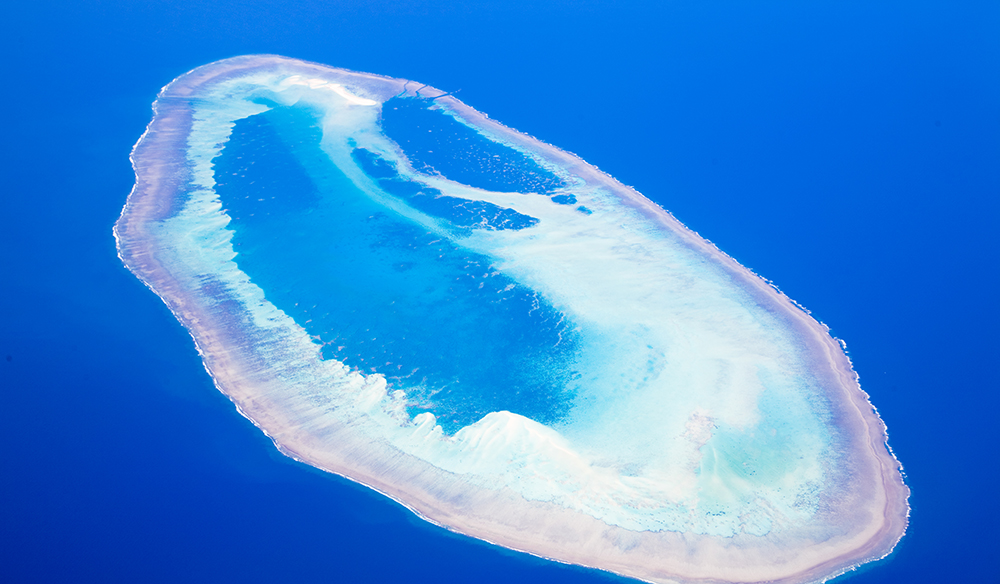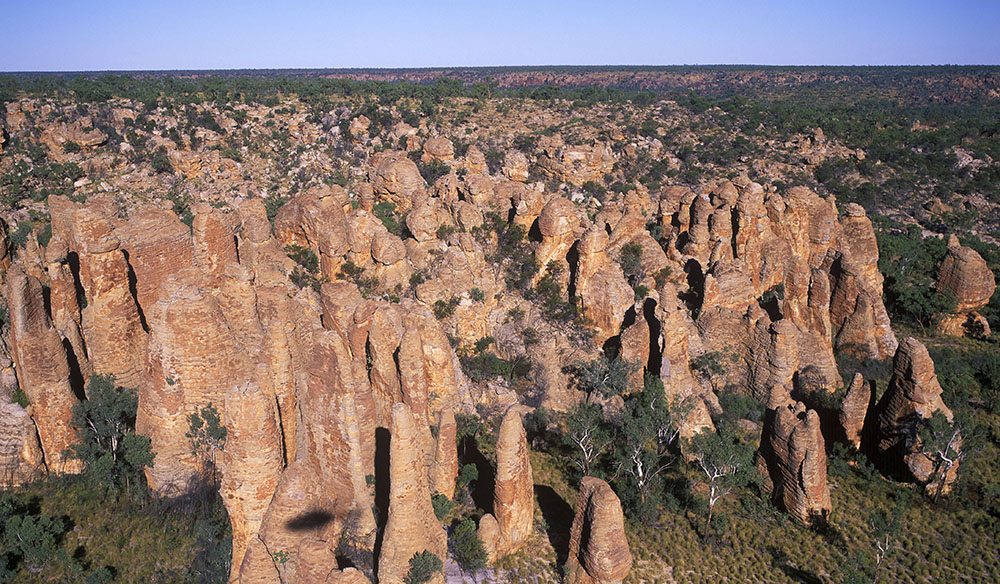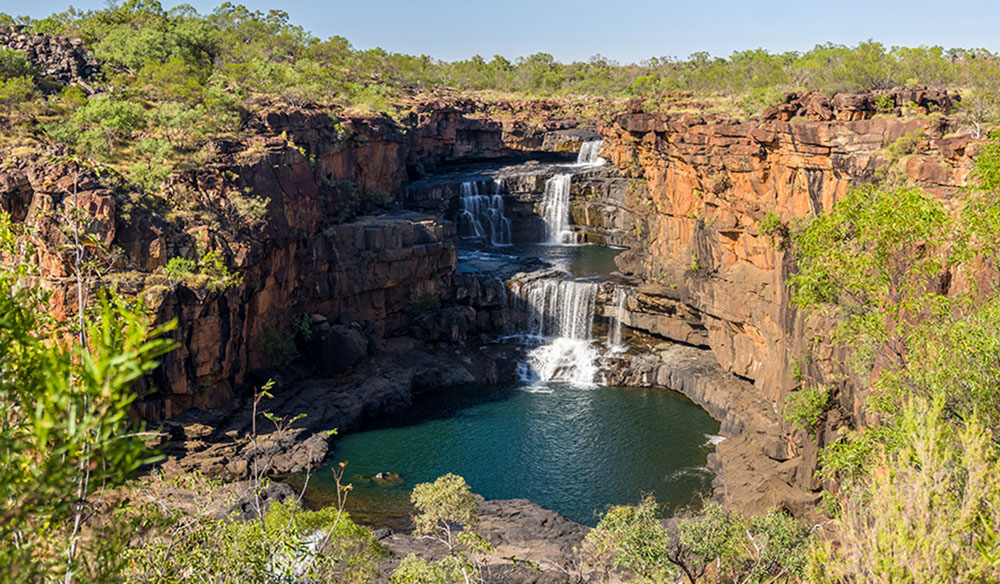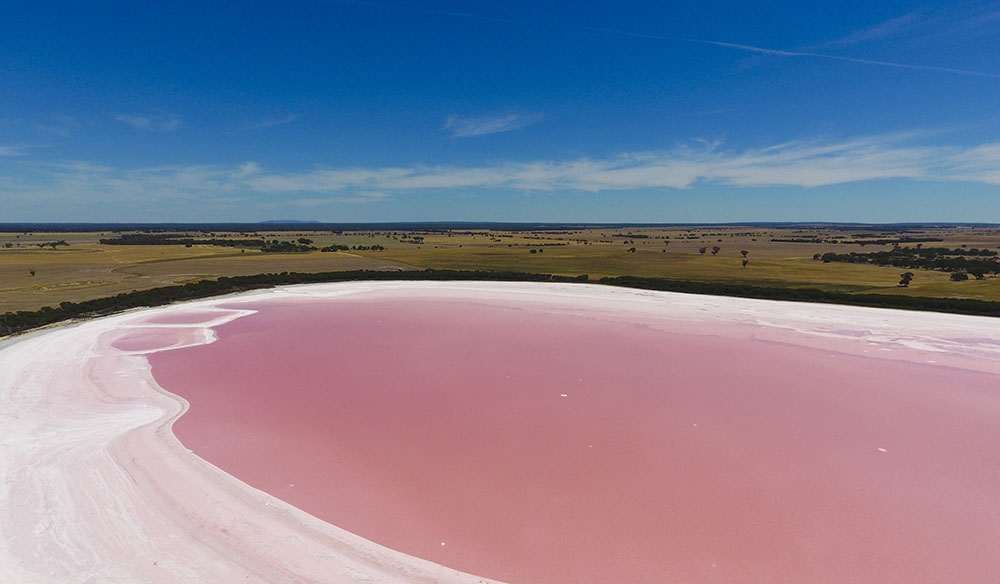09 October 2020
![]() 7 mins Read
7 mins Read

Neolithic Britons erected Stonehenge, while over in Ancient Egypt… well, you get the picture. But in Australia there was no need to go large.
Perhaps the stifling heat wasn’t conducive to dragging 10-tonne boulders around? Or was it the fact that nature had already littered the land with geological structures that no man-made effort could ever hope to replicate in scale or wonder?
Without doubt it has to be the latter; from vast salt basins to peculiar rock formations, here are 10 impressive Australian natural wonders that may have slipped under your radar – part of our 100 Incredible Experiences (right here in your backyard) special issue.
Three tear drops of coral reef sit almost equidistant from each other on the face of the Indian Ocean, 260 kilometres from Broome. With them being almost the same size at around 80 square kilometres apiece, Rowley Shoals is surely one of the most unusual reef formations.
Why you have to go: Fancy yourself an explorer of wild places? It doesn’t get much more remote than this, and it has some of the best diving on the planet.
Ascend a series of stairs among the dunes on southern Tasmania’s Bruny Island and you’ll find a viewing deck that affords a truly remarkable view of the famous Neck.
This is a long slither of land connecting south and north Bruny, an isthmus of sand that forms two beautiful beaches. From the lookout you get a 360º view of the island and you’ll find a memorial to the indigenous Nuenonne people who lived here before European settlement.

The Neck in Bruny Island
Why you have to go: Aside from the striking form of The Neck itself, there’s some great bird life to be found here, including little penguins, which can be seen moving up the beach in groups come dusk.
Surely one of the great wildlife migrations on the planet, rivalling that of the wildebeest or monarch butterfly, Christmas Island red crabs move en masse each year in the wet season of October/November from the island’s forests to the ocean.
It’s thought there are more than 40 million red crabs on the island, and when they decide to migrate to mate, a trip that takes them a week or so, roads and beaches become a carpet of moving red.
Why you have to go: Witness Australia’s most spectacular wildlife migration in this far-flung Territory of ours, plus keep an eye out for the monster of all crabs, the land-based coconut crab.
Boodjamulla National Park has a lush secret: a beautiful oasis at its heart. Lawn Hill Gorge is a pristine, emerald green creek surrounded by orange sandstone cliffs and tropical bush beyond.
It even has its own waterfall, Indarri Falls, a glorious wild swimming spot to cool off in.
people also come to this remote corner of north-west Queensland to cruise its waters in canoes, available for hire. The Waanyi people have lived in the area for at least 17,000 years and traces of their ancient rock art can be found in the park.
Why you have to go: Boodjamulla is a magical place that encompasses the best of the Australian outback with brilliant campsites to boot.

Lawn Hill Gorge in Queensland’s
Boodjamulla National Park
Australia’s red rock is as iconic as its hopping fauna and it’s often shaped into weird and wonderful formations by wind and water.Murphy’s Haystacks is a stunning example of just how dramatic Australia’s geology can get.
Found off an innocuous minor road on South Australia’s Eyre Peninsula, this is our country’s Stonehenge, the giant outcrops of wave-like, sculpted, ochre granite seemingly placed there by some ancient civilisation. Weathering over the millennia has exposed the stone and left it sentinel atop a hill overlooking the surrounding back country as far as the eye can see.
Why you have to go: It’s an epic stroll among these ancient buttresses, and off the beaten track, you’ll likely have them all to yourself.
It’s not often that the planet’s violent past is so awesomely realised; in the Undara Volcanic National Park, uncharacteristically well-formed tunnels look like they’ve been sculpted by some giant worm.
The passages are the result of a volcanic eruption some 190,000 years ago that sent lava down a dry riverbed.
The top of the lava flow cooled and formed a crust allowing the molten rock to flow down the tube and drain away, creating the tunnels.
Why you have to go: Where the roof has collapsed it has provided the perfect conditions for dry rainforest and exotic wildlife.
So romantically named you feel like packing a bull whip in your luggage, It’s easy to see how the Lost City got its moniker. giant pillars of sandstone jut out of the bush like the remains of some lost civilisation.

The lost city at Cape Crawford near the McArthur river
Found in Litchfield National Park, an hour’s drive from Darwin, the lost city is found at the end of a testing 4WD track. But if it was easy to get to you wouldn’t have that sense of wonder when you finally walk its maze of narrow passages, sculpted by hundreds of millions of years of wind and rain, would you?
Why you have to go: Feel like you’re in a lost world as you pick a path through the building-sized structures and natural streets of this spectacular formation.
When Sir David Attenborough describes something as “one of the greatest natural wonders of the world”, you have to sit up and take notice.

The Hunter River is a river in the Kimberley region of Western Australia
And he wasn’t talking about Uluru or that big reef of ours. No, he was enthusing about the Horizontal Falls. Located on the Buccaneer Archipelago, two near-perfectly aligned gorges let the tide rush in and out, creating a surge of water. The most seaward gap is just 20 metres across creating a literal horizontal waterfall.

Western Australia
Why you have to go: Catch a speed boat up through the torrents to see the power of the Kimberley tides for yourself.
California’s Death Valley contains a world-famous salt flat, the impressive Badwater Basin. Its crystallised, saline surface is an impressive 12 kilometres in length and eight kilometres wide.Pah! Lake Gairdner in central South Australia, is also a salt lake, but 160 kilometres in length and 48 kilometres across.

The pink lake phenomenon in south Australia
You can walk out on the brilliant white, hard surface of the salt and look at the horizon where the lake bleeds seamlessly into the sky.
Why you have to go: On par with any of Australia’s giants, you have to have your breath taken away with this little-known, yet big, beautiful natural wonder.
Like a cathedral’s organ rising up from the forest, this 40-metre-high cliff is surely one of the most bizarre geological formations in the country. Found in Mount Kaputar National Park, 38 kilometres north of Narrabri, the hexagonal columns of towering rock were formed when basalt lava from the now extinct Nandewar Volcano cooled before becoming exposed.
It’s a lovely 1.5-kilometre loop walk through the bush to arrive at the site and just beyond it you’ll find swimming holes and collapsed horizontal sections of the hexagonal rock to inspect.
Why you have to see it: Like a hanging Giant’s Causeway, Sawn Rocks has to be seen to be believed.
LEAVE YOUR COMMENT